Paper labels are more than just simple tags sewn into the seams of clothing—they serve as crucial tools for branding, information dissemination, and consumer guidance. Whether you are a fashion brand or a wholesale supplier, understanding the various types of paper labels, their manufacturing processes, and their importance in the garment industry is essential. This content explores the wide array of applications, benefits, and considerations surrounding paper labels, giving you a deeper appreciation of their value.
1. What is a Paper Label? An Introduction to the Basics
Paper labels are more than just simple tags; they’re a crucial communication tool in the garment industry. These labels are adhesive or non-adhesive tags, crafted from different types of paper materials. They carry essential information about garments, making them a vital element in the apparel business. Whether it’s highlighting brand identity, providing product details, or listing care instructions, paper labels serve multiple purposes that go far beyond aesthetics.
1.1 Types of Paper Labels
Paper labels come in a variety of materials and styles, each tailored for a specific purpose. Some are made from recycled paper, appealing to eco-conscious brands focused on sustainability. Others use high-gloss paper to give a sleek, polished look that enhances a brand’s premium feel. There are also textured options for a unique tactile experience or water-resistant papers that withstand washing. Each type offers distinct benefits, whether it’s for branding, sustainability, or aesthetic appeal.
1.2 Importance in the Garment Industry
In the world of fashion, paper labels are not just an afterthought—they’re indispensable. They provide essential information like clothing size, fabric composition, and detailed washing instructions. These labels ensure that garments are cared for properly, helping to maintain their quality over time. Moreover, they play a big part in promotional efforts, offering space for discount tags or special sales information. A well-designed paper label can also help a brand stand out, creating a lasting impression on customers.
1.3 The Evolution of Paper Labels
The history of paper labels is a journey of innovation. They have transitioned from simple, handwritten tags to modern, tech-savvy tools. In the past, paper labels were plain and basic, often just scribbled notes pinned to the garment. Now, they are sophisticated and can be embedded with QR codes that link to websites or apps, offering a deeper connection to the brand’s story.
This shift reflects the increasing demand for more engaging, interactive, and informative labels, as brands aim to stay relevant in a digital world. With the rise of smart labels, the future of paper tags looks more connected and versatile than ever.
2. Different Types of Paper Labels for Clothing
Paper labels play a crucial role in the apparel industry. They aren’t just about displaying information—they help build a brand’s identity and communicate important messages. Let’s explore the various types of paper labels that you can choose for your clothing line, each offering unique benefits to suit your specific needs.
2.1 Paper Label Clothing
Paper labels for clothing are designed to be both practical and budget-friendly. They are usually made from materials like kraft paper or coated paper. Kraft paper is known for its natural, rugged look, perfect for brands that value an eco-friendly, organic aesthetic. It’s sturdy and holds up well even with regular handling. Coated paper, on the other hand, offers a smoother surface, ideal for vibrant and high-quality printing.
Some options even come with water-resistant finishes, keeping the label looking fresh and readable. These labels strike a great balance between cost and durability, making them a popular choice for a wide range of garments.
2.2 Paper Label Tags
Paper label tags are an integral part of retail presentation. They are the labels you often see attached to clothing with a string or a plastic fastener. These tags are highly versatile and usually carry brand logos, size information, price details, or promotional content. A well-designed tag not only provides essential information but also adds a layer of branding that can enhance a customer’s first impression.
Customizing these tags with unique shapes, finishes, and colors can give your clothing an edge in the competitive retail market. These tags make a statement and can often be the deciding factor in a customer’s purchasing decision.
2.3 Eco-Friendly Paper Labels
The fashion industry is shifting toward sustainability and eco-conscious choices, and paper labels are no exception. Eco-friendly paper labels are made from recycled materials or sustainably sourced papers. These labels appeal to the environmentally-aware consumer, helping brands align with green values. Despite being eco-friendly, they don’t sacrifice on quality.
Many options still allow for full-color printing, embossing, or special textures. Brands that opt for these labels not only reduce their environmental footprint but also send a strong message to their customers that they care about the planet. Eco-friendly labels are both stylish and responsible, offering an excellent way to boost your brand’s image.
3. The Benefits of Using Paper Labels in Garments
Choosing the right label for garments can shape brand perception and build consumer trust. Paper labels, a favorite choice in the clothing industry, come with several unique advantages that make them stand out.
3.1 Cost-Effective
Paper labels are a budget-friendly alternative to woven or leather labels. They offer high-quality branding without the high costs associated with more expensive materials. This makes them a smart choice for both emerging brands looking to establish themselves and established businesses aiming to reduce production costs. Even on a tight budget, brands can still deliver a polished and professional look.
3.2 Easy to Customize
When it comes to creativity, paper labels are unmatched. They are incredibly easy to customize, enabling brands to experiment with various colors, fonts, and finishes. The flexibility of paper labels means that brands can incorporate intricate designs, unique textures, and even special printing techniques to make their labels stand out.
Whether it’s a sophisticated logo, playful design, or bold text, paper labels give designers the freedom to make a statement that aligns perfectly with their brand’s identity.
3.3 Eco-Friendly and Sustainable Choices
In a world increasingly focused on sustainability, paper labels provide a greener option. Many manufacturers now offer labels made from recycled materials or biodegradable paper, minimizing environmental impact. These eco-friendly choices are not only good for the planet but also boost a brand’s image among environmentally conscious consumers. By choosing sustainable paper labels, brands can align themselves with values of sustainability and appeal to a growing audience of green-minded shoppers.
3.4 Versatile Design Options
The design possibilities with paper labels are nearly endless. They can be printed to match any brand aesthetic, from a minimalist, clean look to vibrant, colorful themes. This level of versatility ensures that every brand, whether luxurious or casual, can maintain a consistent and compelling brand presence. With paper labels, companies can adapt to seasonal trends, special collections, or promotional events with ease, keeping their branding fresh and engaging.
4. Paper Label Manufacturing: What You Need to Know
Creating the perfect paper label isn’t just about aesthetics—it’s about precision and quality. The manufacturing process involves careful consideration at every stage. From choosing the paper material to the final quality check, each decision contributes to the overall look and durability of your label. Let’s break down what goes into making a paper label that stands out.
4.1 Choosing the Right Paper Material
Selecting the right paper is the first step. It determines how the label will look, feel, and last. Options range from budget-friendly recycled stock to premium, textured papers. Recycled paper is eco-friendly and cost-effective, perfect for brands that emphasize sustainability. On the other hand, high-quality textured paper adds a luxurious touch, ideal for brands aiming to create a premium feel.
Consider the paper’s thickness, texture, and finish—each can significantly impact the perception of your product. Think about durability as well; some paper types are more resistant to tearing, making them ideal for garments or products that undergo frequent handling.
4.2 Printing Techniques for Paper Labels
The way your label is printed can change everything. It can make your brand pop or fade into the background. Popular printing methods include:
- Offset Printing: Known for its clarity and consistency, offset printing is perfect for large runs. It offers sharp images and vibrant colors that catch the eye.
- Digital Printing: Ideal for shorter runs, digital printing is fast, flexible, and affordable. It’s great if you need to update designs frequently or offer personalized labels.
- Screen Printing: Best for bold designs and durable finishes, screen printing gives a unique texture. It’s the go-to choice for labels that need a handcrafted feel or have a rugged, long-lasting finish.
Each technique has its own strengths. Consider what aligns with your brand’s identity and budget.
4.3 Laminating and Coating Options
Laminating and coating can elevate the quality of your paper labels. These options not only enhance the look but also increase durability. Laminates can be glossy or matte, each giving a distinct feel to the label. A glossy laminate adds shine, making colors pop, while a matte finish provides a sophisticated, understated look.
Coating options like UV or aqueous coatings add a protective layer, making the label more resistant to moisture and fading. These finishes are particularly beneficial for labels exposed to wear and tear, such as those on garment tags or products that encounter heavy handling. The right laminate or coating can make a label stand out while ensuring it lasts.
4.4 Quality Assurance in Label Manufacturing
Quality is everything in label manufacturing. It’s not just about how the label looks but how it performs. During the manufacturing process, stringent quality checks are conducted. These checks ensure that the colors are consistent, the material is cut to precise specifications, and the printing is flawless. Even minor imperfections can affect the perception of your brand, so every detail counts.
Make sure your label manufacturer has rigorous quality assurance procedures in place. Consistency across every batch should be non-negotiable. This ensures your brand image remains strong, no matter how many labels you produce.
By understanding the intricacies of paper label manufacturing, you can make informed decisions that enhance your brand’s identity. Investing time in choosing the right materials and methods will pay off with labels that not only look great but also perform well, reinforcing your brand’s quality and reliability.
5. Designing Paper Labels: Key Considerations
Creating the perfect paper label goes beyond just slapping on a logo or product name. It’s about blending design elements to capture attention, communicate effectively, and leave a lasting impression. A label is more than decoration—it’s an essential tool that can boost brand recognition and convey important product details. Let’s explore some key aspects that can elevate your paper labels from ordinary to exceptional.
5.1 Branding Considerations
Your label is often the first point of contact between your brand and the consumer, so it needs to make an impact. Think of it as a miniature billboard for your brand. It should showcase your brand’s identity clearly and consistently. This means paying attention to your logo placement—ensure it’s prominent yet balanced. Choose color schemes that align with your brand’s overall aesthetic, using shades that are recognizable and memorable.
Fonts are equally crucial; they need to convey the tone of your brand. A luxury brand might opt for elegant, serif fonts, while a modern brand could choose sleek, sans-serif styles. Investing in professional design can make a brand unforgettable.
5.2 Information Layout
Clarity is key when it comes to displaying essential information. The layout should be clean and organized, making it easy for customers to find what they need at a glance. Highlight critical details such as the product size, fabric content, and care instructions, using a font size that is readable but not overwhelming. Proper spacing is essential—don’t cram everything together.
A little white space can go a long way in making the label visually appealing and easy to read. Think about the flow of information; what do you want the customer to notice first? Arrange content accordingly to guide the reader naturally through the details.
5.3 Use of Colors and Fonts
Colors and fonts are more than just design choices—they’re tools that communicate your brand’s personality. Use colors that are consistent with your brand’s color palette. This helps in creating a cohesive and recognizable brand identity. Consider the psychological effects of colors: bold reds might convey excitement, while cool blues could give a sense of calm and reliability.
Fonts should be professional and straightforward, emphasizing readability. Stay away from overly decorative fonts that could make the text hard to read, especially at smaller sizes. A clean, readable font reinforces professionalism and reliability, two traits every brand should strive for.
5.4 Enhancing Aesthetics with Unique Features
To make your labels truly stand out, consider adding unique visual elements that create a sense of quality and distinction. Techniques like foil stamping, which adds a shiny metallic finish, can give a premium feel to your product. Embossing adds texture, creating a tactile experience that can engage customers and make your label more memorable.
Spot UV coating can highlight specific areas of your label, drawing the eye to key details like your logo or product name. These techniques are especially effective for high-end or luxury brands that want to convey exclusivity and sophistication. Think of these features as the finishing touch that turns a good label into a great one.
By focusing on these design elements, your paper labels won’t just be informative—they’ll be an integral part of your brand’s identity, leaving a lasting impression on customers and setting your products apart from the competition.
6. Paper Label Tag: What Makes Them Unique?
Paper label tags are often the first impression a customer gets when they see a garment. These tags don’t just convey essential details—they also tell a story. They’re a branding opportunity that lets companies express their identity in a way that’s memorable and visually appealing.
6.1 The Role of Paper Label Tags in Retail
Paper label tags are more than just a price display. They’re a versatile tool that retailers use to communicate vital information. Beyond prices, they can showcase promotional offers, highlight new arrivals, or emphasize the brand’s commitment to sustainability. These tags can help create a connection with environmentally-conscious shoppers by pointing out eco-friendly materials or practices. In short, they guide the customer’s buying journey, making sure they notice what matters most.
6.2 Custom Shape and Size Options: Stand Out with Creativity
One of the biggest advantages of paper label tags is the freedom to get creative. These tags can be die-cut into virtually any shape, giving brands the chance to stand out on the rack. Circular tags, heart shapes, or bold geometric patterns—each choice adds a unique touch to the garment. A creatively shaped tag can be eye-catching and memorable, making the brand’s identity clear at a glance. Additionally, choosing the right size allows for a balance between aesthetics and functionality, ensuring enough space for all necessary information.
6.3 Attaching Methods: Style Meets Practicality
The way a paper label tag is attached can also make a difference. Common methods include plastic fasteners, elegant strings, or trendy metal chains. Each attachment has its own appeal and suits different styles of clothing. A string attachment might convey a rustic, handcrafted feel, while a sleek metal chain could give off a luxurious vibe. Brands can select the attaching method that aligns with their image, considering the garment’s fabric and design. A well-chosen attachment can elevate the overall presentation of the product.
6.4 Tips for Creating Impactful Paper Label Tags: Make a Lasting Impression
To ensure your paper label tag leaves a strong impression, keep it clean and simple. Avoid clutter—focus on the essentials. Including a clear call-to-action is a great way to engage customers. This could be a QR code linking to your website or social media tags encouraging them to follow and share. High-quality finishes, like glossy or matte lamination, can also make a tag look premium. A well-crafted paper label tag doesn’t just inform—it invites customers to explore the brand further, leaving them with a positive impression.
By paying attention to these details, brands can turn a simple paper label tag into a powerful marketing tool that captures attention, sparks interest, and enhances the overall shopping experience.
7. Buying Paper Labels Wholesale: What to Consider
For businesses looking to source labels in bulk, buying wholesale is an excellent cost-saving strategy. However, it’s essential to consider several factors before making a wholesale purchase to ensure you’re making the right choice.
7.1 Paper Label Wholesale Advantages
Buying paper labels wholesale offers significant savings. The more you buy, the lower the cost per unit becomes. This is particularly beneficial for brands with high production demands, where consistent label supply is crucial. Bulk purchases ensure you never run out of stock, preventing delays and maintaining production flow.
7.2 Choosing a Reliable Wholesale Supplier
Not all wholesale suppliers are the same. Research is critical when selecting a supplier. Look for one with a proven track record of delivering quality products on time. It’s important to read reviews from other businesses and request samples to evaluate the label quality and print clarity before making a commitment. This extra step helps you avoid unexpected surprises later on.
7.3 Negotiating Prices and Terms
One of the biggest advantages of buying paper labels wholesale is the ability to negotiate. Since you’re purchasing in bulk, suppliers may offer discounts, better payment terms, and even favorable shipping arrangements. Don’t hesitate to discuss prices and terms—negotiating can lead to significant savings and better value for your business.
7.4 Sample Testing Before Bulk Orders
Before you place a large order, always request samples. This gives you the chance to verify the quality, design, and durability of the labels. Testing ensures that the paper labels meet your standards and align with your brand’s image. This step can save you from costly mistakes and ensure a smooth experience when your bulk order arrives.
8. Future Trends in Paper Labels for the Garment Industry
The paper label industry is constantly evolving, driven by rapid technological advancements and changing consumer preferences. Keeping up with these future trends is crucial for brands looking to stay ahead of the competition. By embracing innovation, companies can create labels that not only meet current demands but also anticipate the needs of tomorrow’s customers.
8.1 Integration of Technology
Smart labels are rapidly becoming a game-changer in the garment industry. These innovative labels, featuring NFC (Near Field Communication) technology and QR codes, offer a direct link to digital content. By scanning the code, consumers can access everything from a brand’s website to exclusive video content. This tech-savvy approach enhances the customer experience, making it more interactive and informative. With the ability to track product origins and verify authenticity, these labels also add a layer of trust and transparency.
8.2 Minimalist and Transparent Designs
In today’s design world, less is more. Minimalist labels with clean lines and transparent backgrounds are on the rise. These designs focus on essential information while allowing the fabric and style of the garment to take center stage. The simplicity of these labels not only appeals to the modern consumer but also contributes to a sophisticated and sleek brand image. This trend embraces subtle elegance, making labels more about quality than excess.
8.3 Increased Use of Recycled and Biodegradable Paper
Sustainability is no longer just a buzzword—it’s a key consideration for brands and consumers alike. As environmental concerns grow, many companies are opting for paper labels made from recycled and biodegradable materials. These labels help reduce waste, lower the environmental footprint, and align with the eco-conscious values of today’s shoppers. By adopting these sustainable options, brands demonstrate their commitment to the planet, making it an appealing choice for environmentally aware consumers.
8.4 Custom Printing for Personalized Labels
Personalization is becoming a major trend in the garment industry. Custom printed paper labels, including limited edition prints and specially designed tags for exclusive collections, are gaining popularity. These personalized touches not only add uniqueness to each garment but also enhance its value and exclusivity. A personalized label creates a deeper connection with the consumer, turning an ordinary item into something special and memorable.
9. Why you choose Trim Tex Associates For Paper Labels
When considering a supplier for paper labels, here are three key reasons to choose a trusted and reputable company:
- High-Quality Materials: Our paper labels are crafted using premium materials that ensure durability and a professional appearance. This guarantees that your products are presented in the best possible light, with labels that last throughout the entire product life cycle.
- Customizable Solutions: We offer a wide range of customization options to meet your specific needs. Whether you require unique designs, specific sizes, or different types of finishes, we can tailor our paper labels to match your brand’s identity and product requirements.
- Timely Delivery and Competitive Pricing: We understand the importance of meeting deadlines and staying within budget. With our efficient production process, we ensure fast turnaround times without compromising on quality, offering you competitive prices that make us a cost-effective choice for your paper label needs.

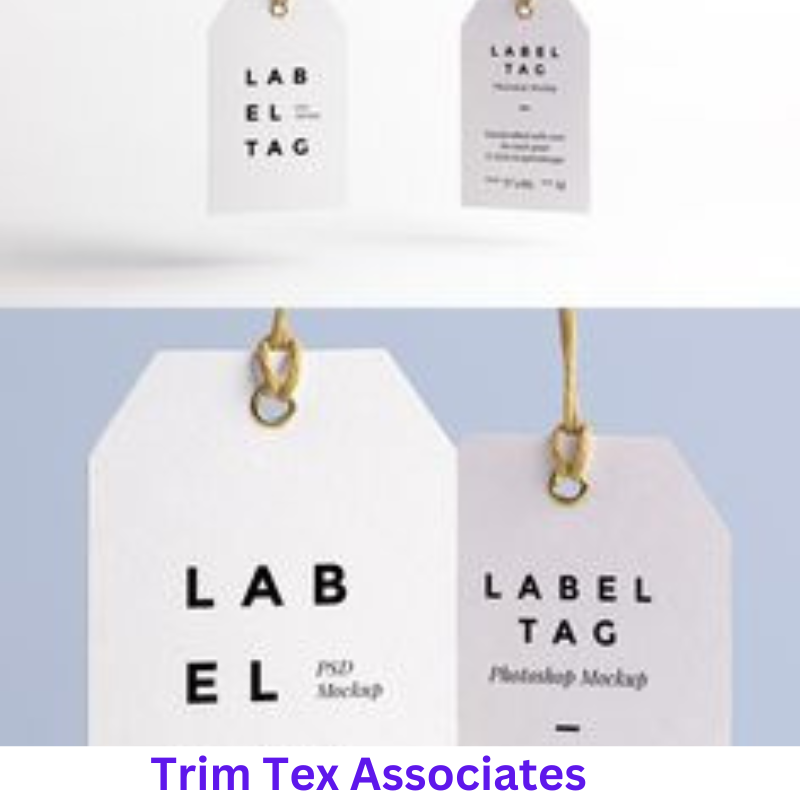
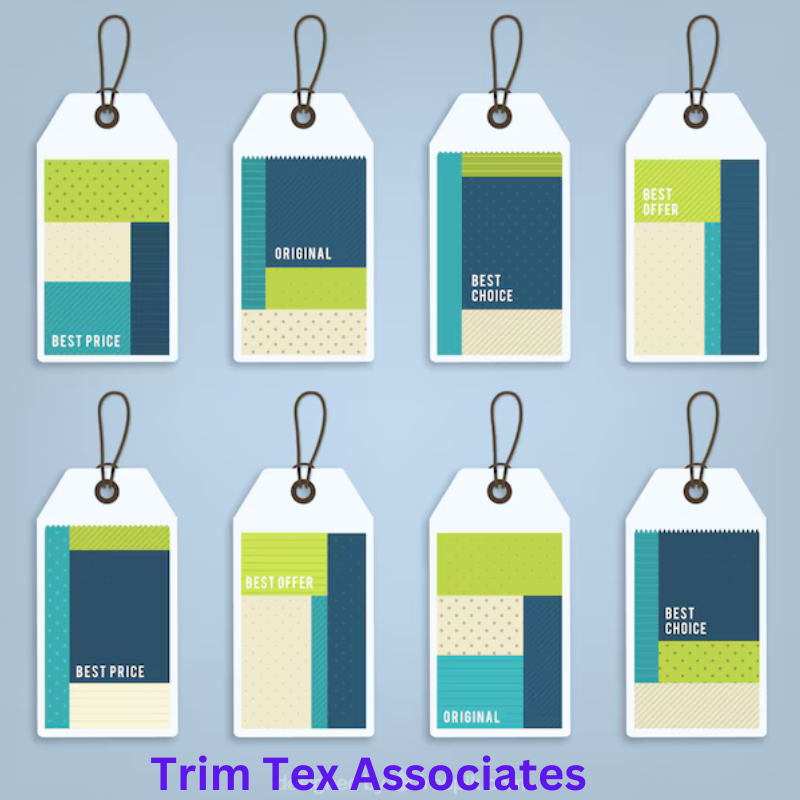
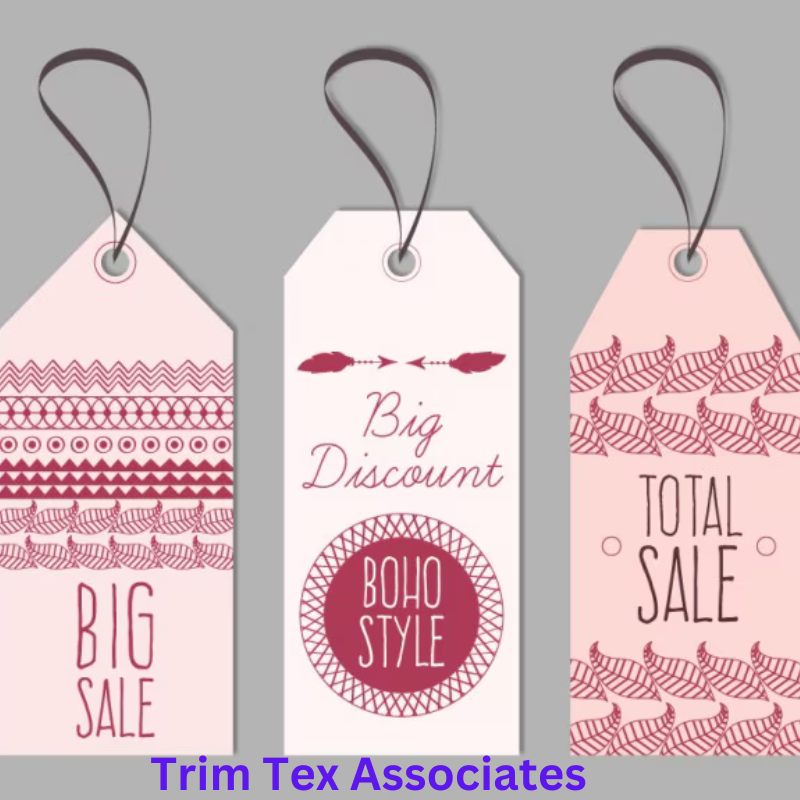
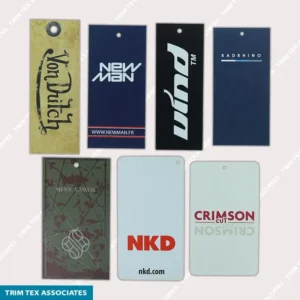
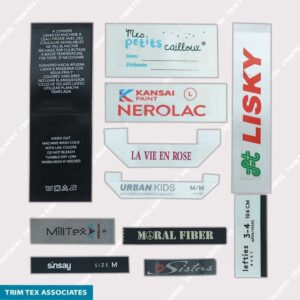
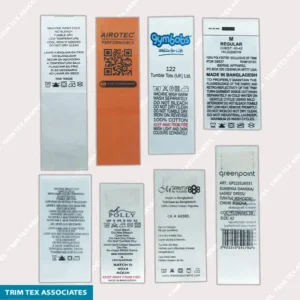
Reviews
There are no reviews yet.